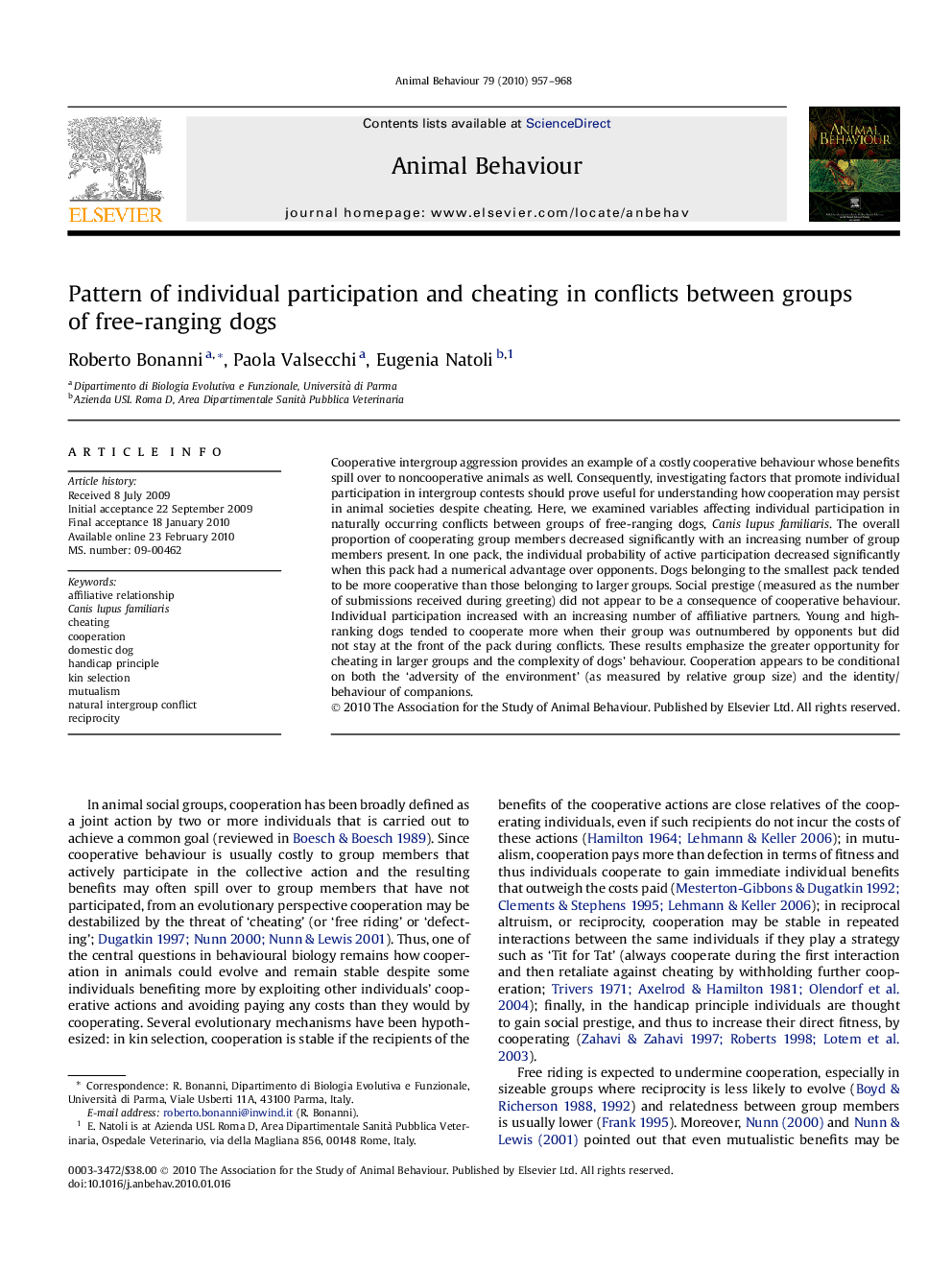| Article ID | Journal | Published Year | Pages | File Type |
|---|---|---|---|---|
| 2417313 | Animal Behaviour | 2010 | 12 Pages |
Cooperative intergroup aggression provides an example of a costly cooperative behaviour whose benefits spill over to noncooperative animals as well. Consequently, investigating factors that promote individual participation in intergroup contests should prove useful for understanding how cooperation may persist in animal societies despite cheating. Here, we examined variables affecting individual participation in naturally occurring conflicts between groups of free-ranging dogs, Canis lupus familiaris. The overall proportion of cooperating group members decreased significantly with an increasing number of group members present. In one pack, the individual probability of active participation decreased significantly when this pack had a numerical advantage over opponents. Dogs belonging to the smallest pack tended to be more cooperative than those belonging to larger groups. Social prestige (measured as the number of submissions received during greeting) did not appear to be a consequence of cooperative behaviour. Individual participation increased with an increasing number of affiliative partners. Young and high-ranking dogs tended to cooperate more when their group was outnumbered by opponents but did not stay at the front of the pack during conflicts. These results emphasize the greater opportunity for cheating in larger groups and the complexity of dogs' behaviour. Cooperation appears to be conditional on both the ‘adversity of the environment’ (as measured by relative group size) and the identity/behaviour of companions.
